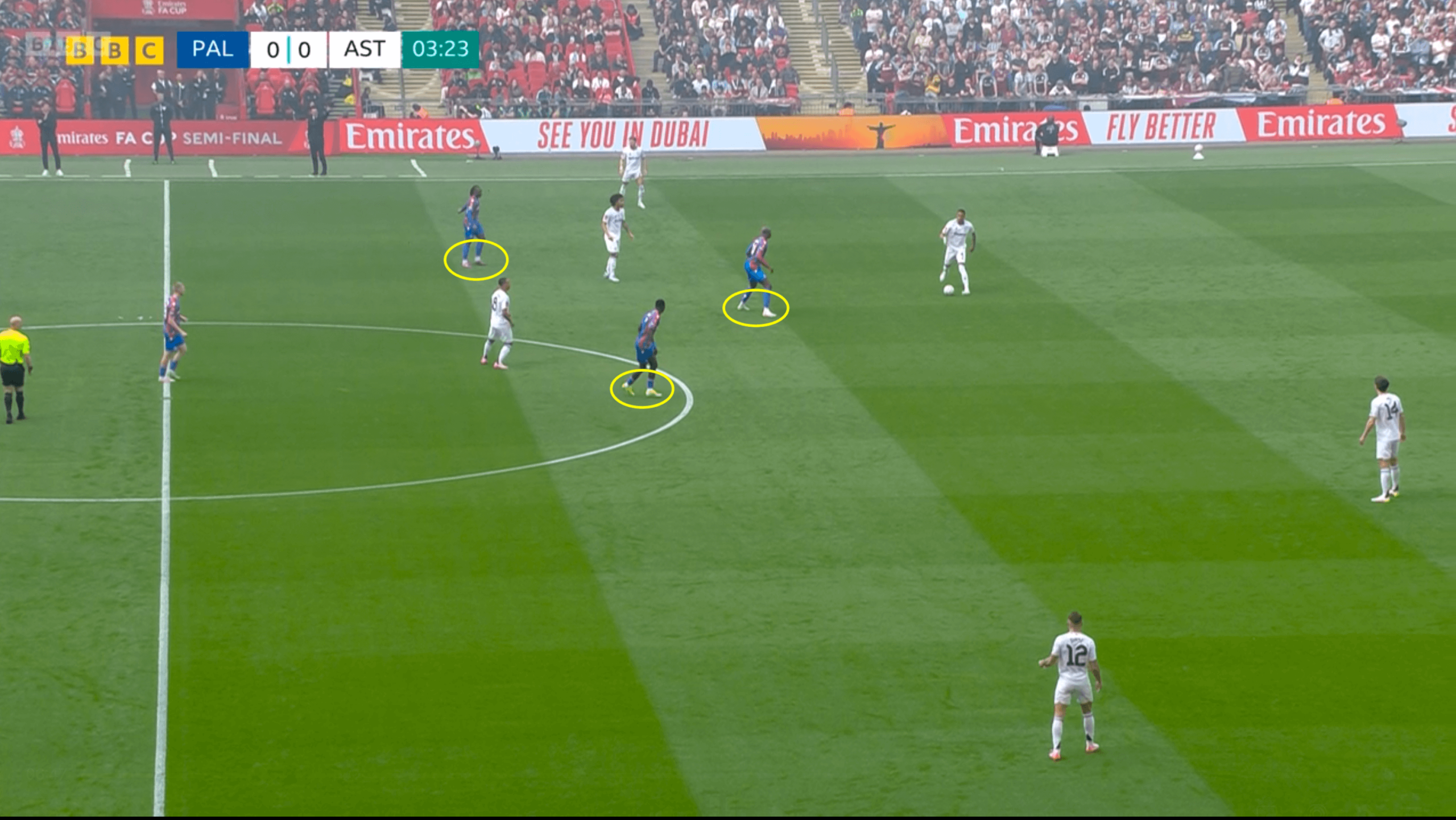
Pressing is often associated with harrying down an opponent to win the ball back, but it’s not all gung-ho.
In a footballing cycle where teams want to lure you in before combining quickly to play through the lines, the pressing needs to be measured.
One of those teams is Unai Emery’s Aston Villa, who thrive on building up from deep, before slicing through their opponents with neat combinations and smart off-ball movement.
Trying to smother Villa through a high press isn’t an easy task, and it’s understandable why Crystal Palace’s manager, Oliver Glasner, wanted his team to press out of a medium block in the sides’ FA Cup semi-final encounter.
Throughout the match, Palace defended around the centre circle, waiting for certain triggers to move up and press.
Against Villa’s 4-2 build-up, Palace’s main idea was to limit the access to Youri Tielemans and Boubacar Kamara, and prevent Emery’s side from combining to find their No 10s.
Accordingly, Eberechi Eze, Ismaila Sarr and Jean-Philippe Mateta were in narrow positions to mark Villa’s double pivot and block the passing lanes into them.

To bypass this, Villa needed to circulate the ball from one side of the pitch to the other before finding an opening. When Ezri Konsa played the ball to Pau Torres…
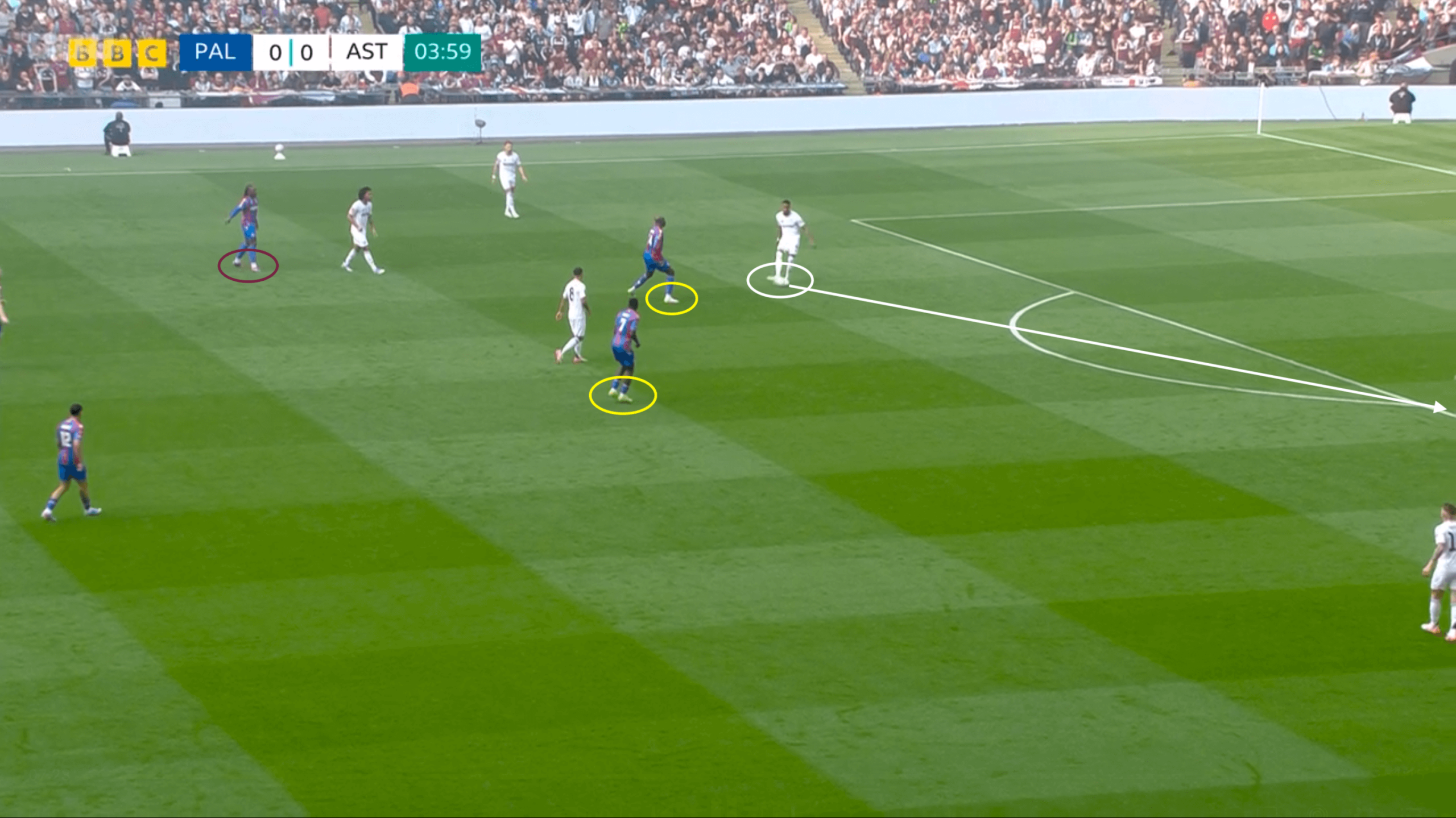
… Sarr moved up to press him while Mateta picked up Tielemans.
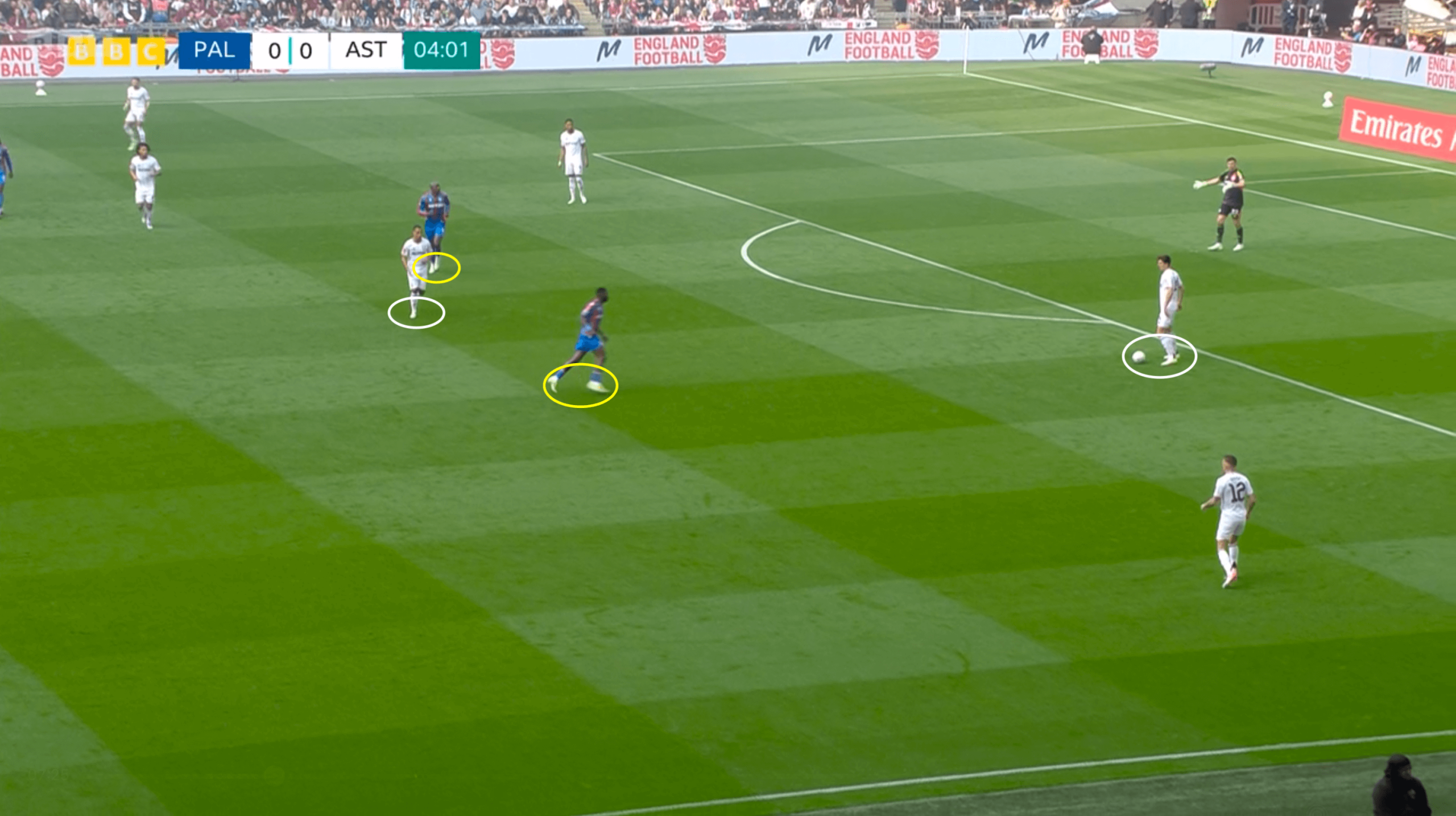
In case Torres shifted the ball to his left-back, Lucas Digne, Daniel Munoz surged forward to press him…
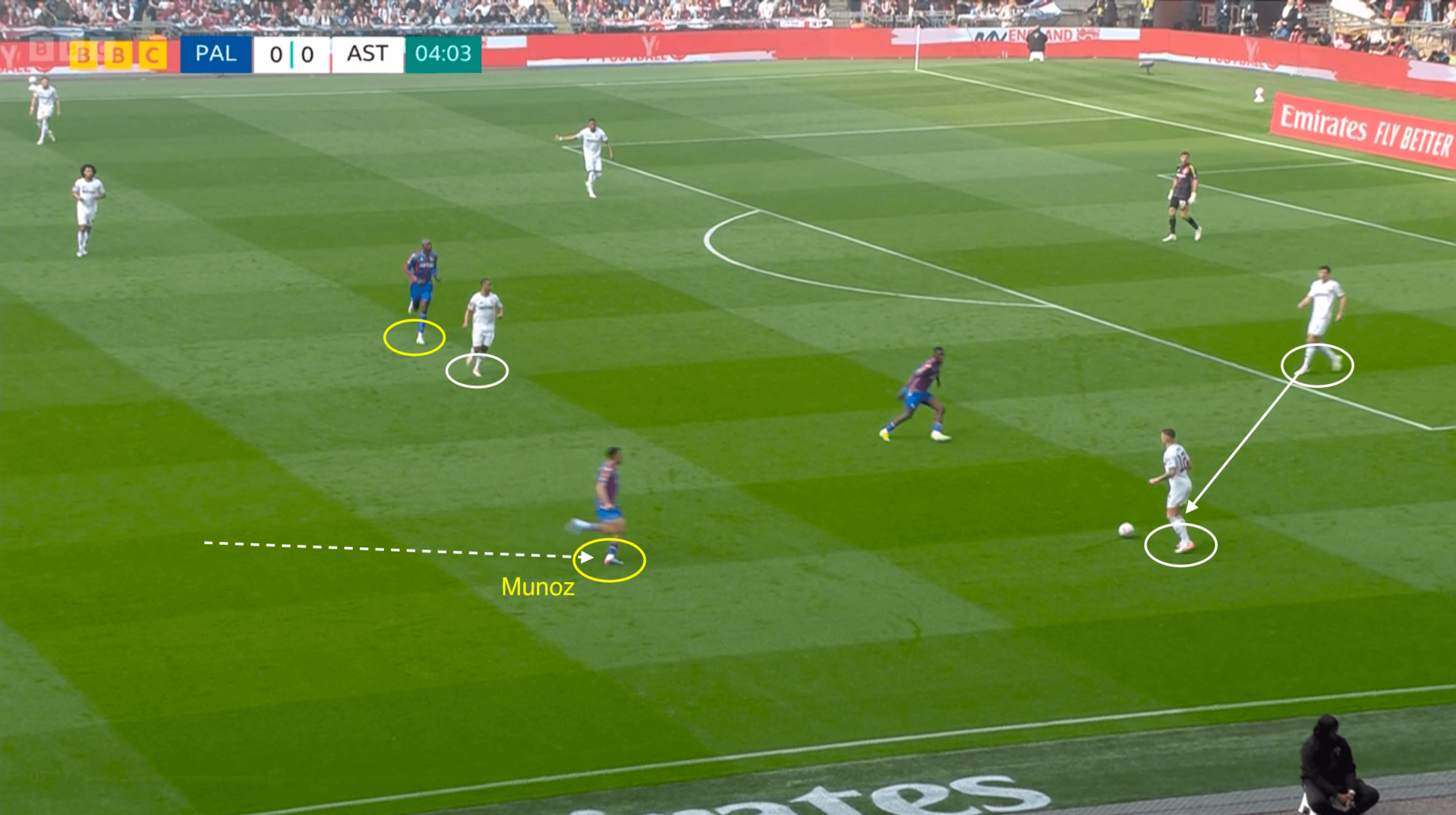
… as Chris Richards was marking John McGinn. Meanwhile, Eze moved infield to prevent Villa from switching the play to Kamara.
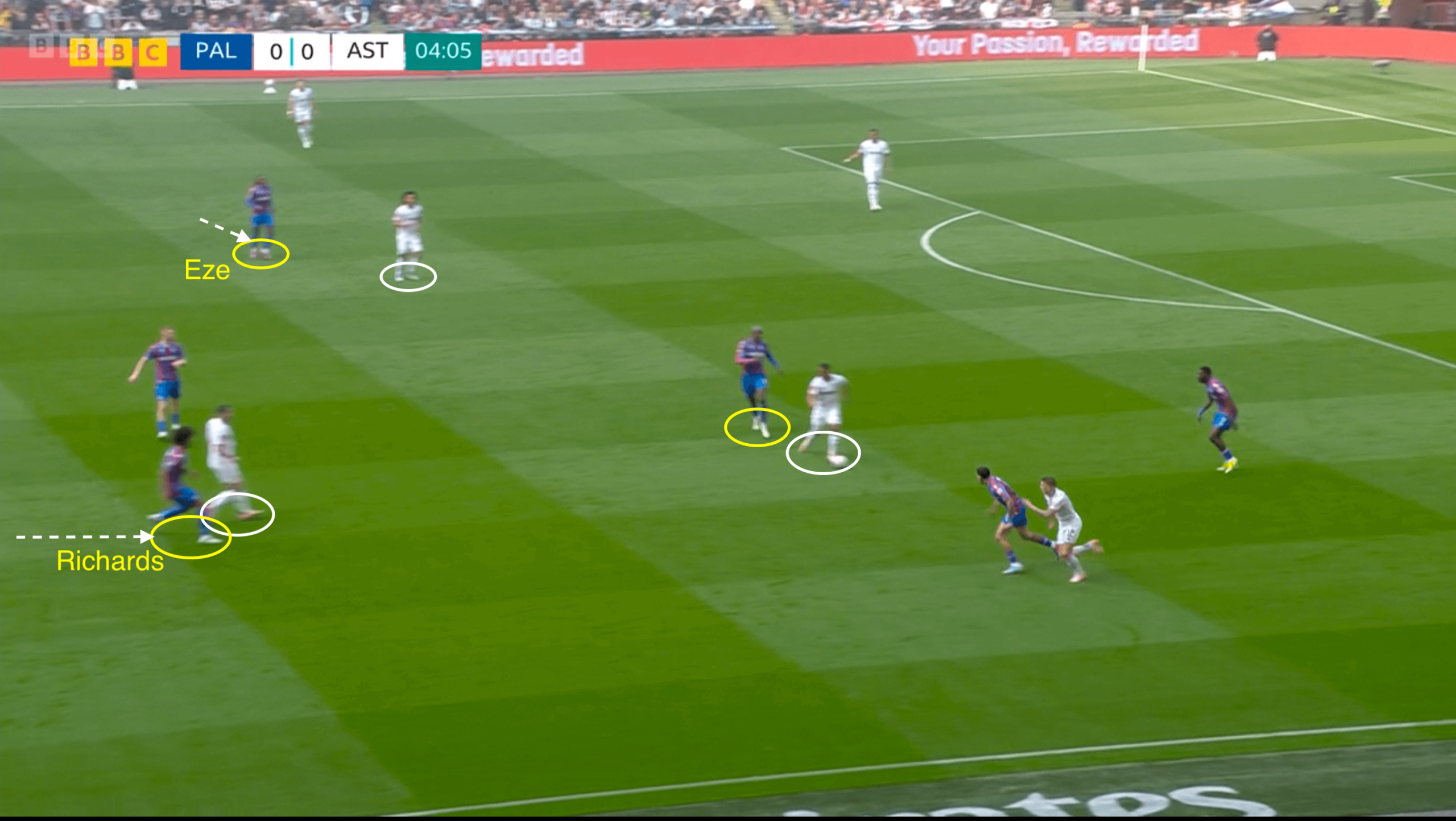
Here, Kamara is marked by Eze and Mateta’s pressure forces Tielemans to go back and reset the attack.
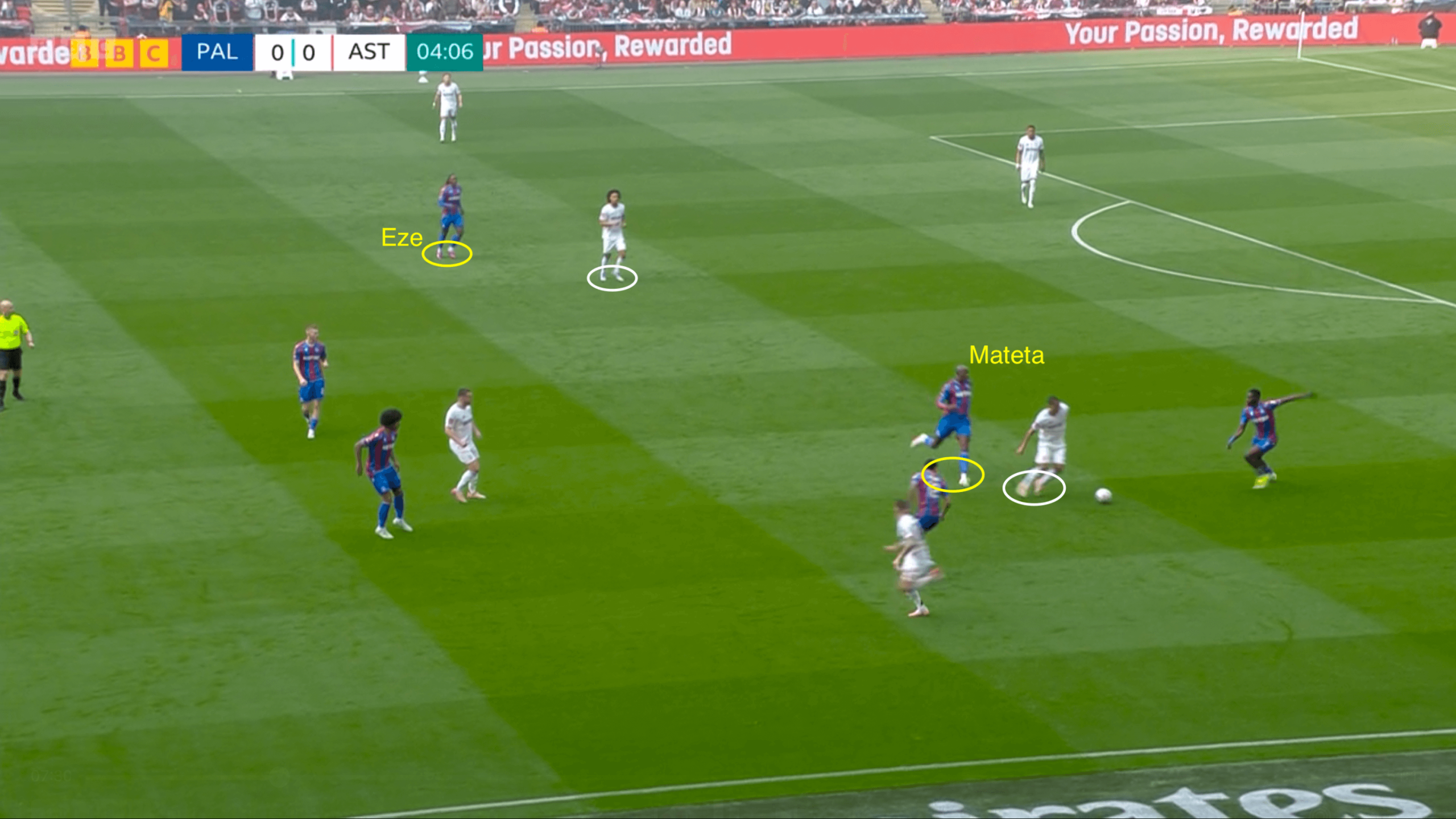
There were different variations to Palace’s pressing down their left side, but the main task stayed the same: deny Villa from accessing Kamara and Tielemans while marking Morgan Rogers, Marco Asensio and McGinn.
One variation featured Mateta pressing Kamara while blocking the passing lane into Tielemans, who is marked by Sarr. In addition, the Senegal forward’s narrow position protected Adam Wharton from a two-versus-one situation in case Villa wanted to access Tielemans through Torres.
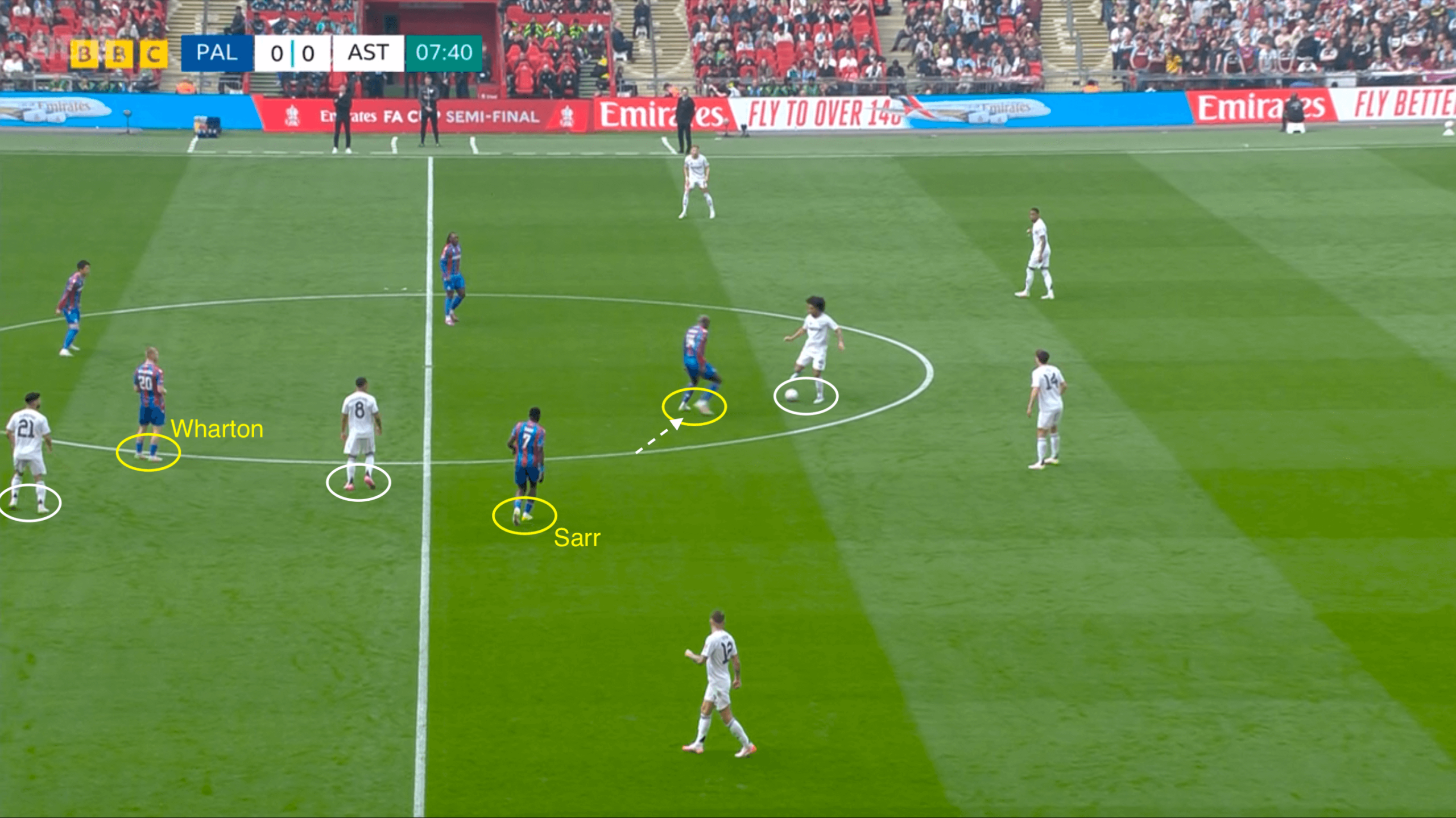
When Kamara circulated the ball to Matty Cash, Tyrick Mitchell was ready to press Villa’s right-back with Daichi Kamada and Marc Guehi (out of shot) in position to pick up Rogers.
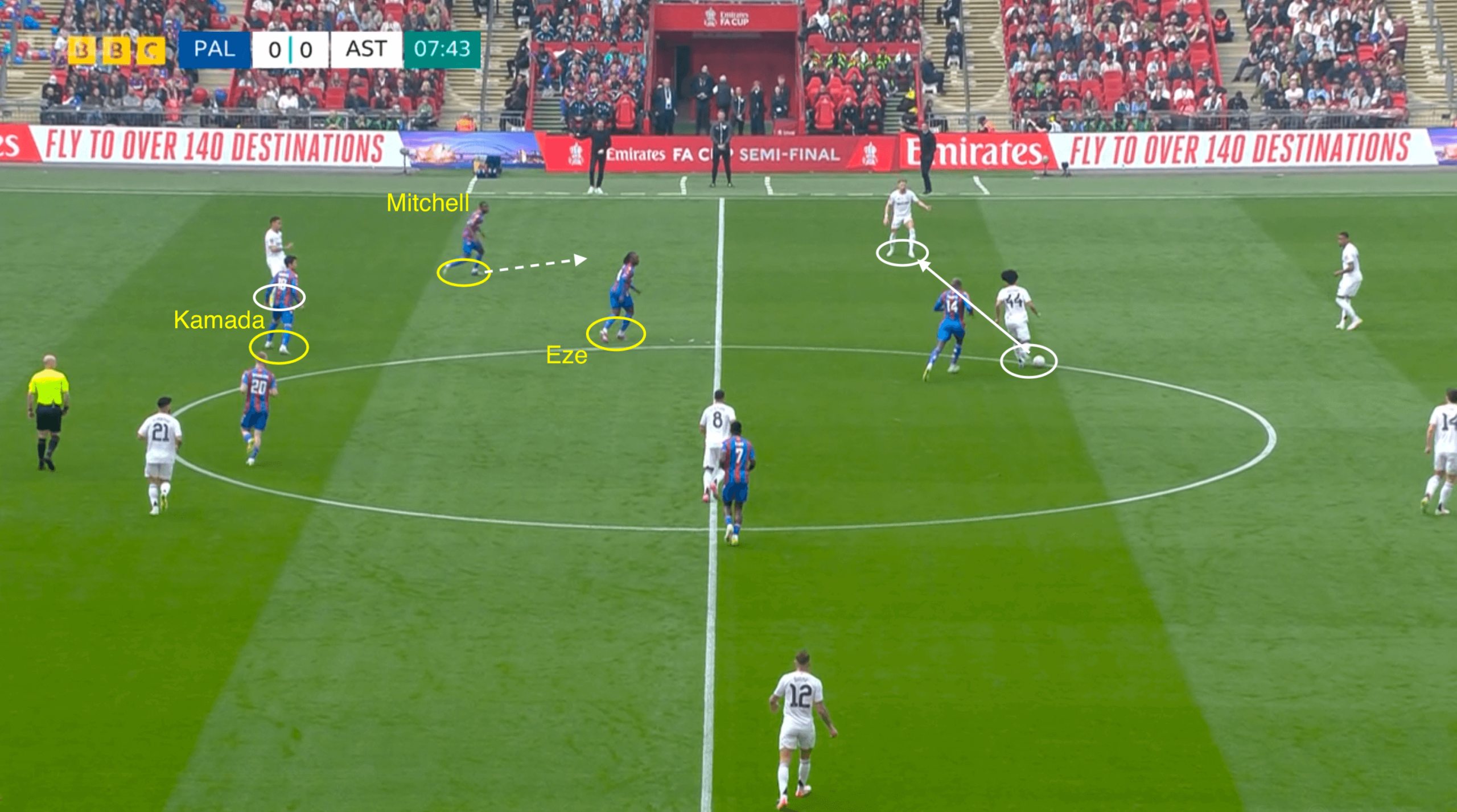
Again, Tielemans and Kamara are taken out of the equation by Eze, Mateta and Sarr, which forces Cash to play the ball back to Konsa.
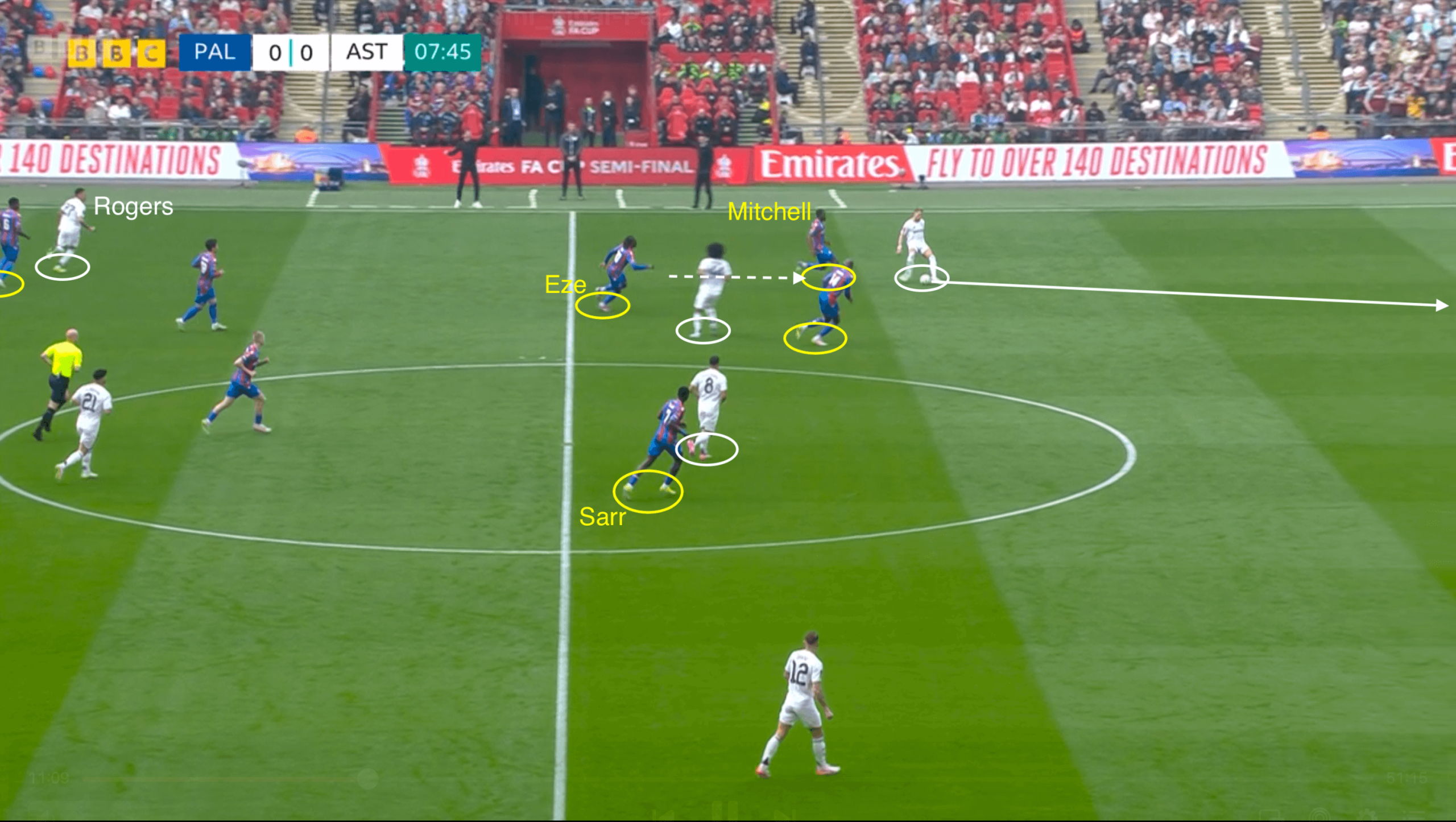
This is the trigger for Wharton and Sarr to move up towards Tielemans and Torres, while Mateta presses Konsa, and Eze blocks the passing lane into Kamara.
Eventually, Villa go all the way back to their goalkeeper, Emiliano Martinez.
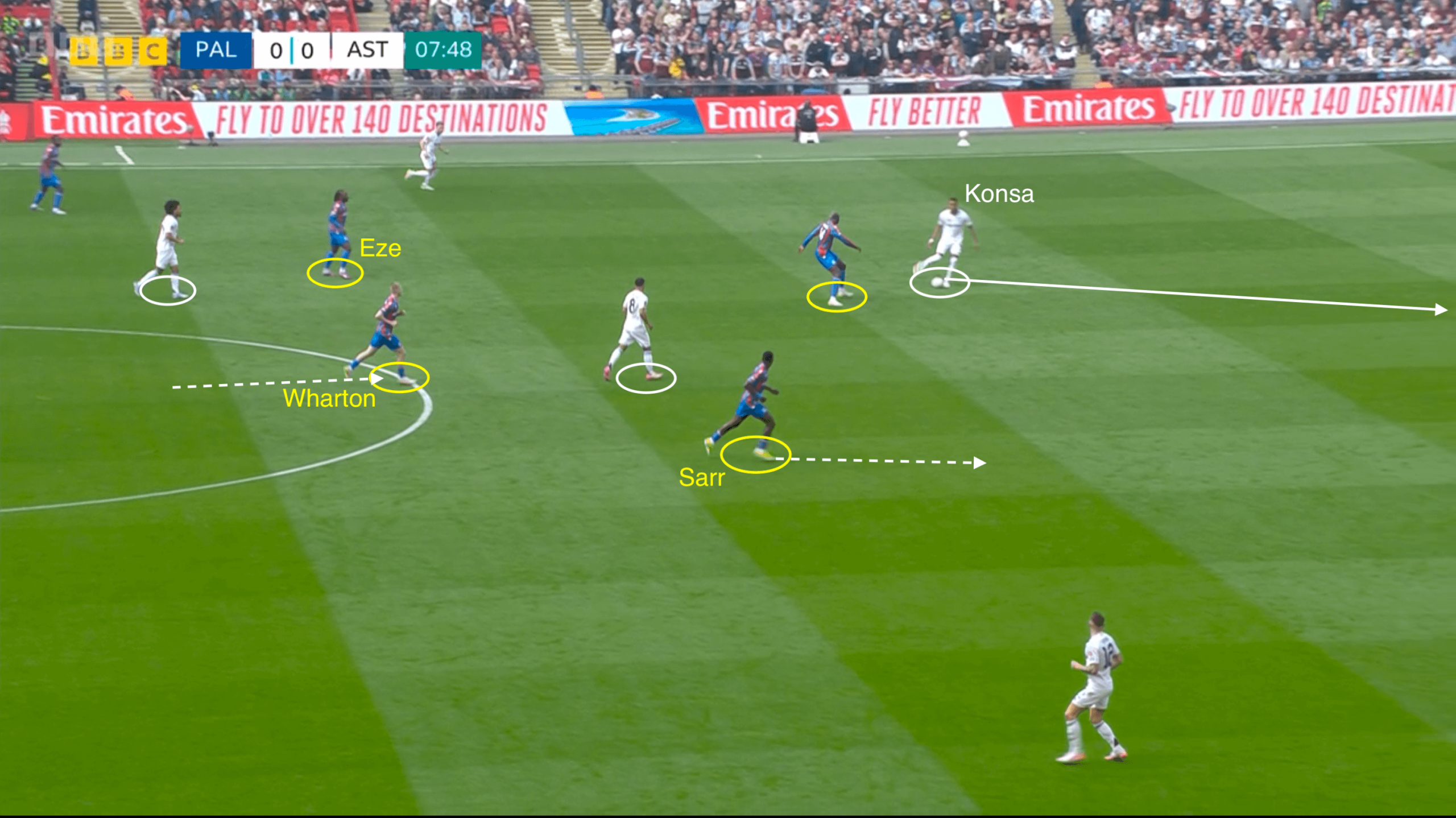
Mitchell wasn’t always able to move up and press Cash, especially when Rogers was in a wider position. That task was left for Eze, while Kamada picked up Kamara.
Here, Palace’s front five are boxing Tielemans and Kamara as Richards is marking McGinn. When Torres plays the ball to Konsa…
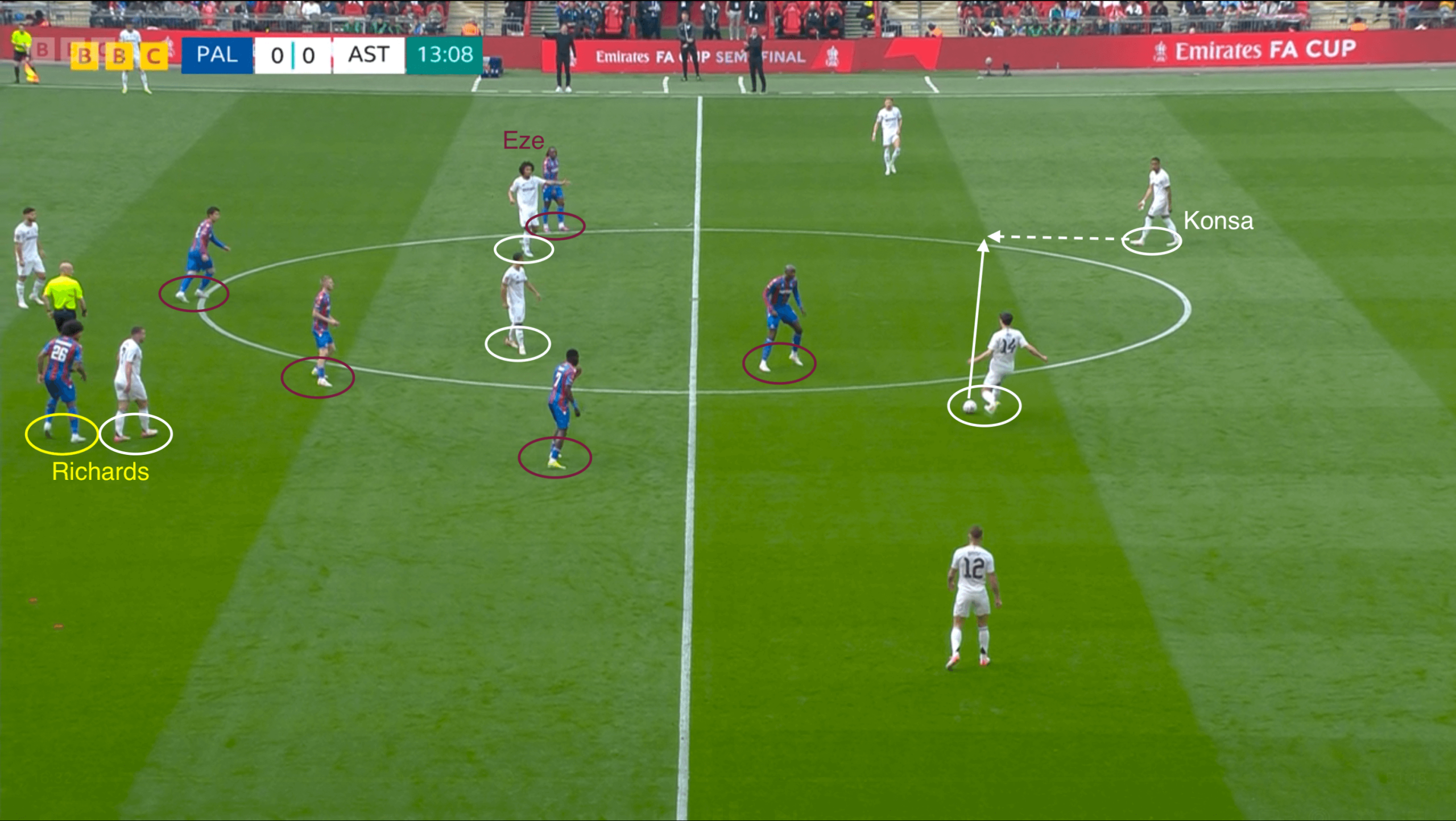
… Mateta takes a couple of steps to block the passing lane into Tielemans, Wharton adjusts his position to mark Asensio, and Kamada moves to the left to support Eze against Kamara.

Konsa’s pass to Cash is the trigger for Palace’s left side: Eze presses Villa’s right-back, Kamada picks up Kamara and Guehi moves up to track Asensio. Meanwhile, Sarr is in a narrow position to mark Tielemans.
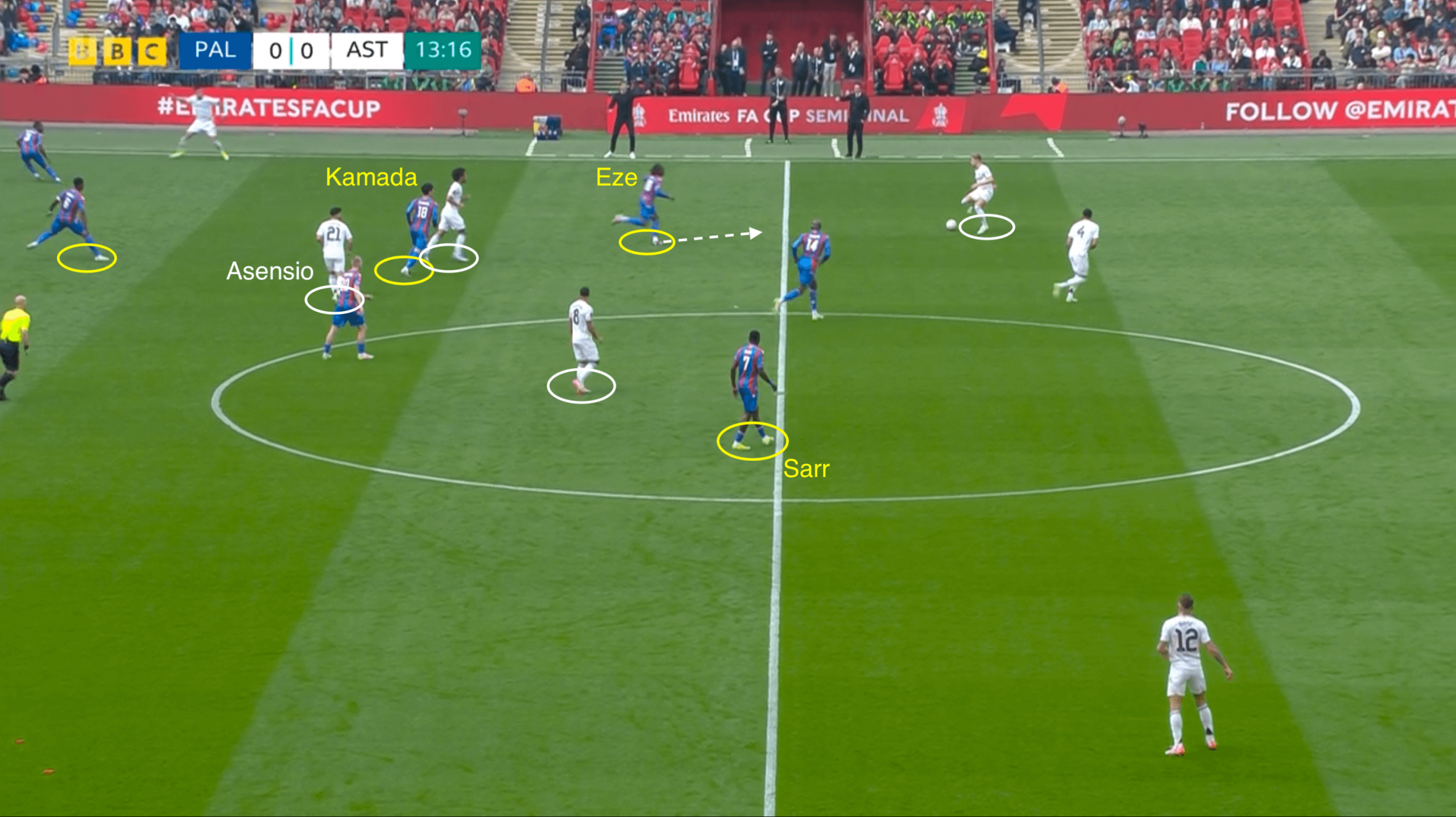
Cash then plays the ball to Rogers, who is under pressure and can see that Kamara and Tielemans are marked. Palace’s pressure leads to a Villa throw-in and the attack is reset once again.
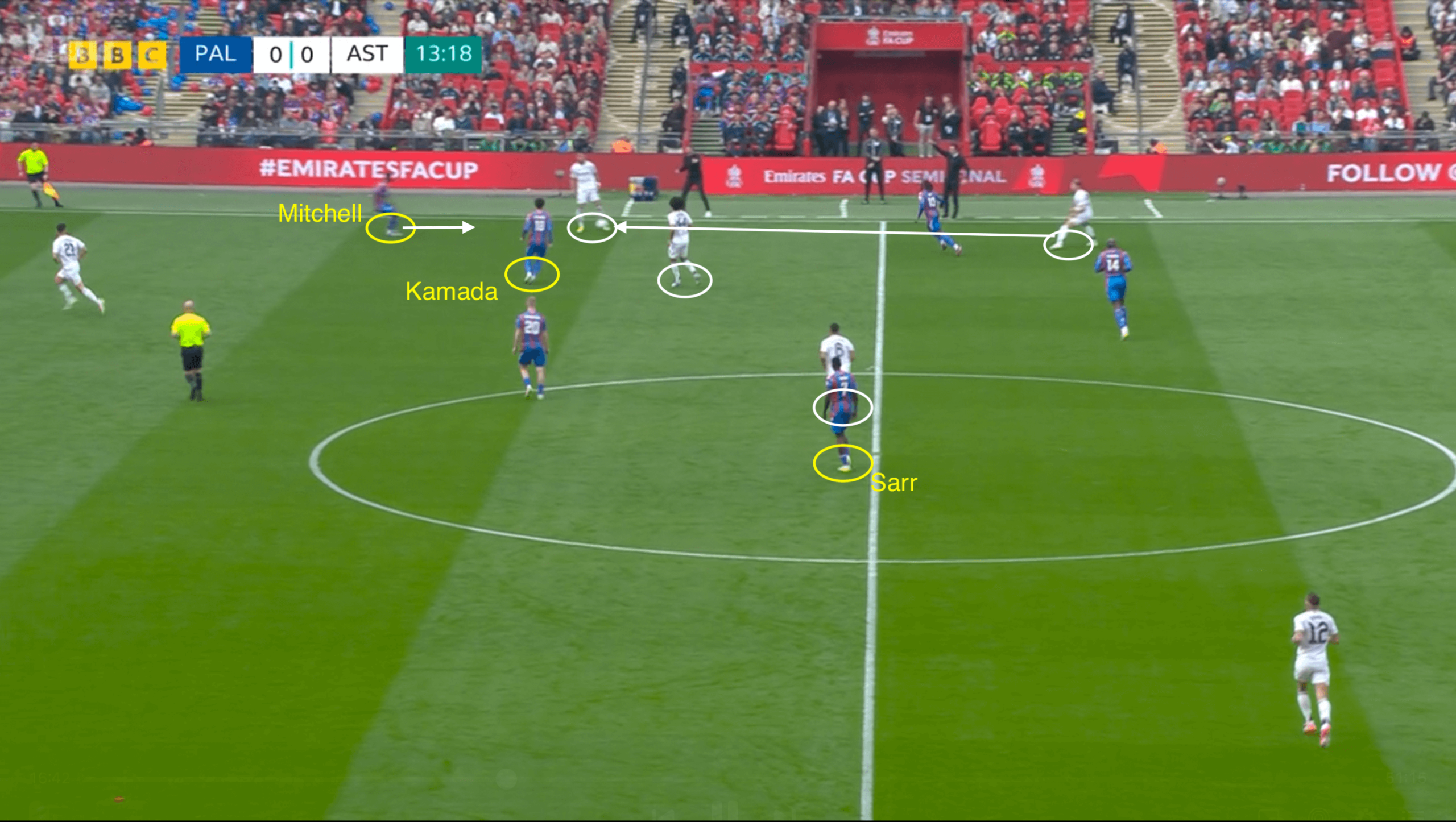
In another example, Mateta is blocking the passing lane into Tielemans, Wharton is marking Asensio, Guehi is keeping an eye on Rogers, and the left side is ready to jump if Kamara plays the ball to Cash.
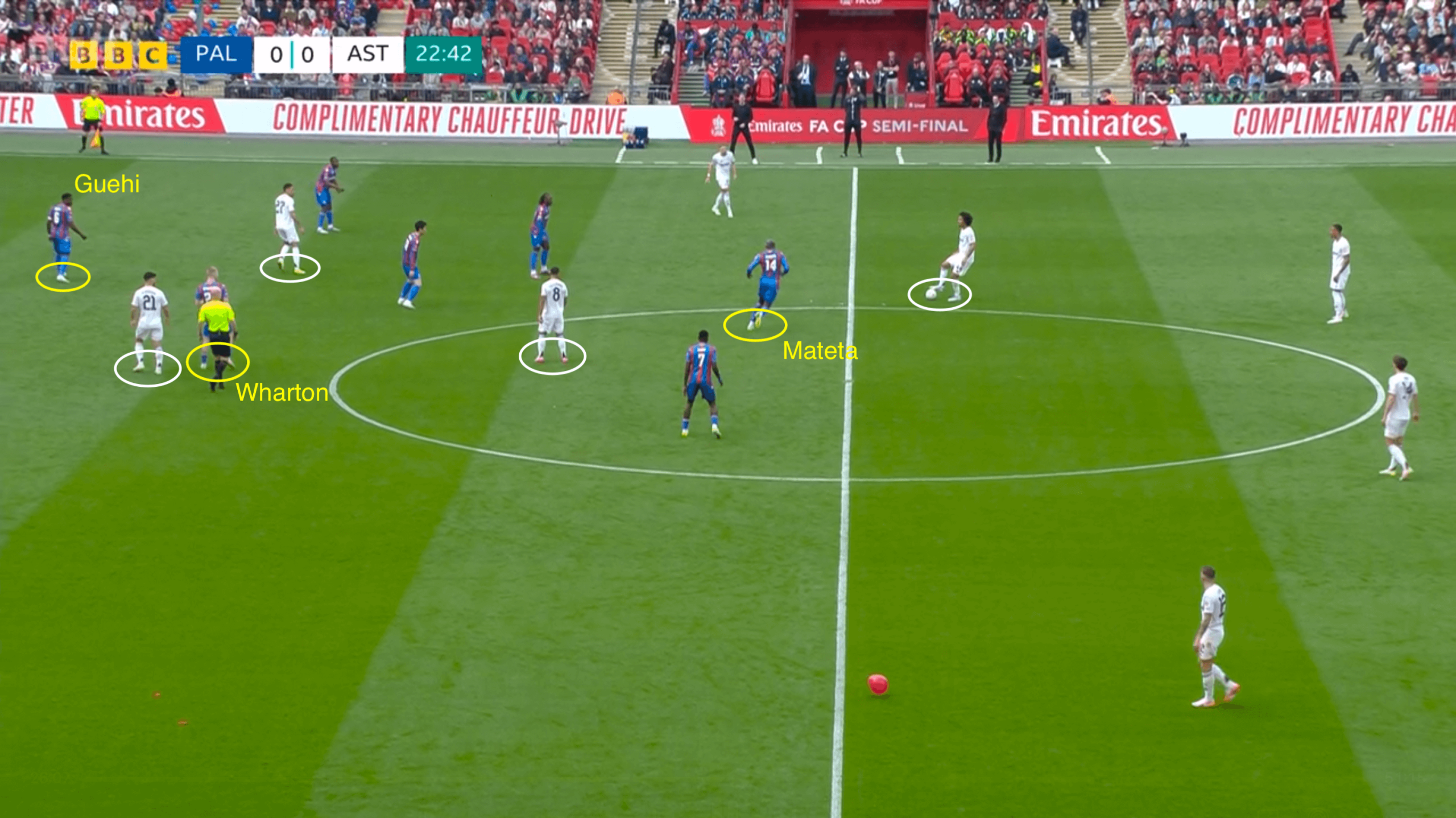
Kamara’s backwards pass to Konsa is the trigger for Wharton and Sarr to dash towards Tielemans and Torres as Mateta presses the ball.
Konsa then plays the ball to Torres…
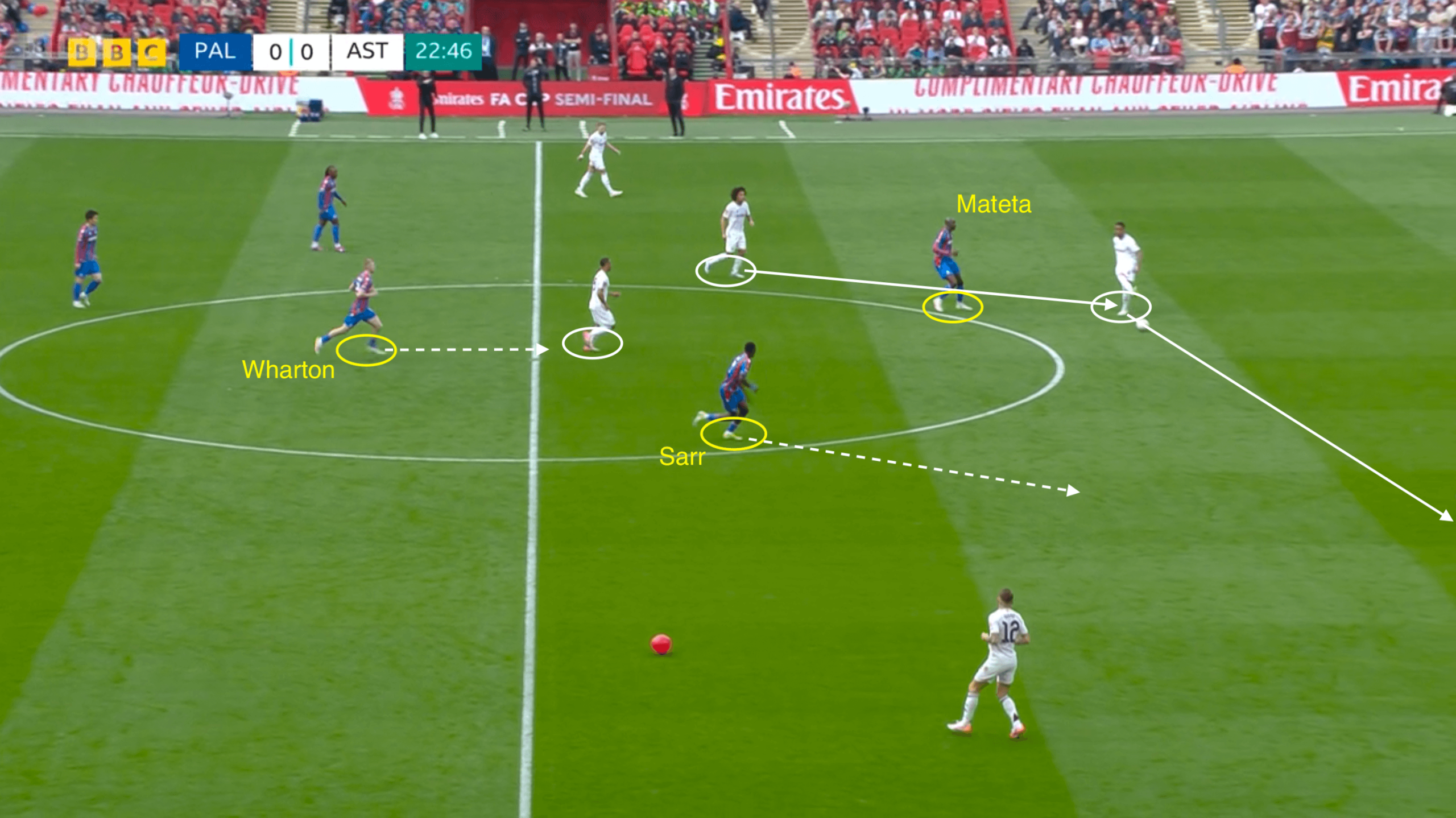
… which is the cue for Munoz to press Digne because Villa’s left-back is the only available passing option.
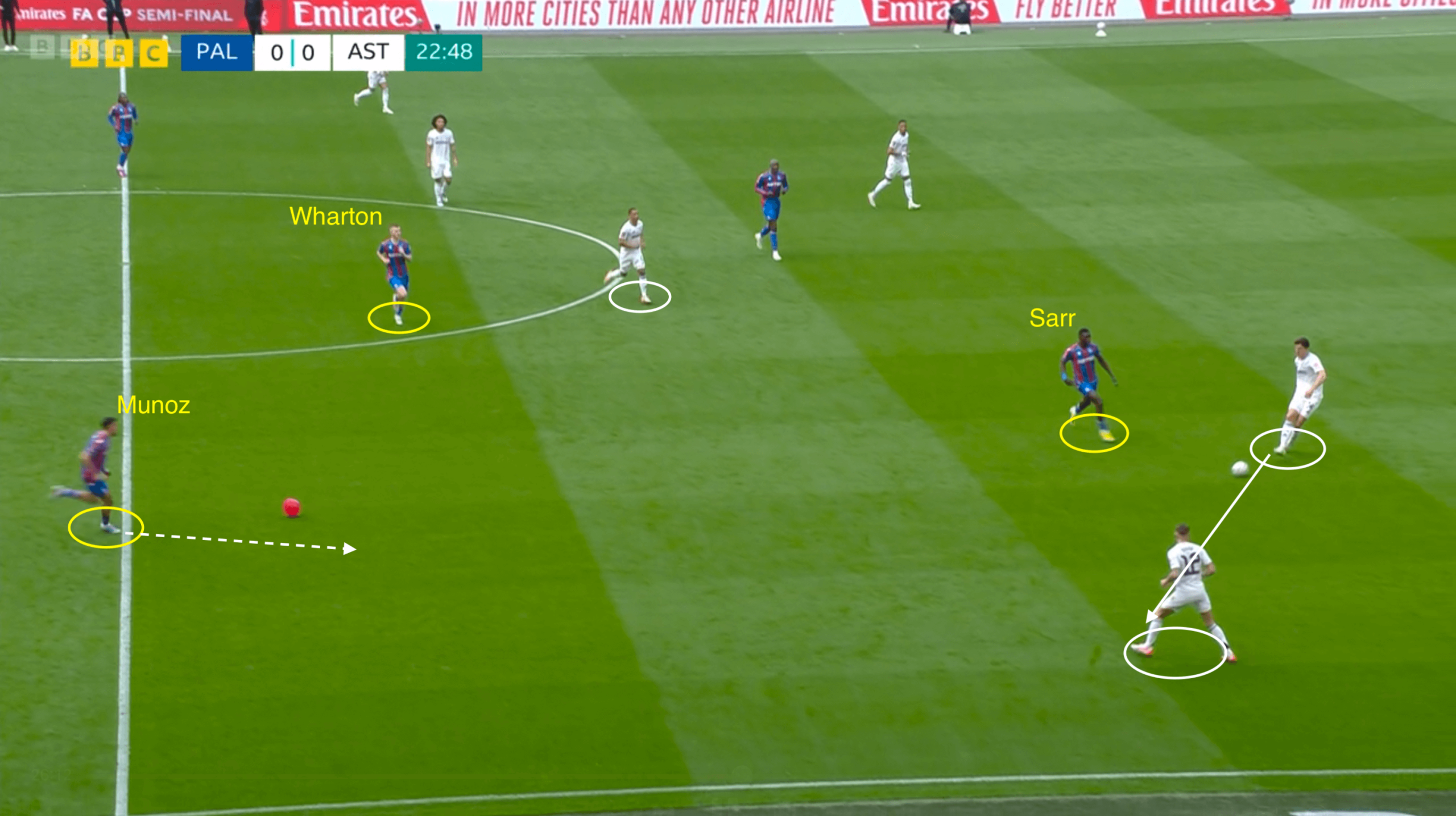
With Eze and Wharton in position to press Villa’s double pivot, and Richards marking McGinn, Digne plays the ball down the touchline.
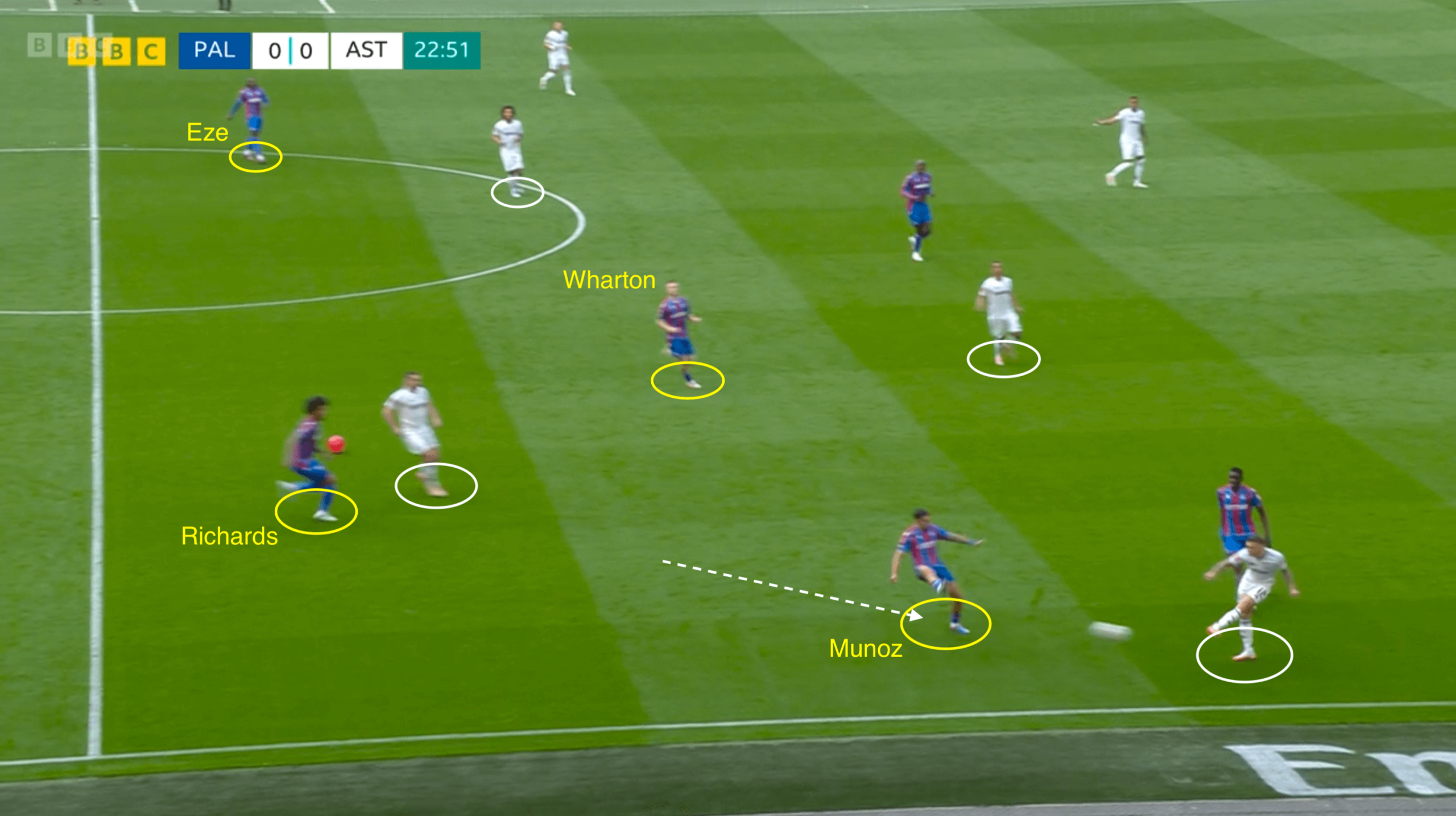
However, Maxence Lacroix and Guehi are tracking Asensio and Ollie Watkins’ movements. Despite winning a throw-in, Villa’s attack is halted.
Palace’s defensive organisation in their mid-block limited Villa’s threat on the ball and kept forcing them into the wide areas. On top of that, the pressure led to Palace’s first goal of the game.
In the build-up to that goal, Tielemans tries to fast-track Villa’s attack by playing the ball quickly to Digne. However, Munoz immediately presses Villa’s left-back, knowing that Richards is keeping tabs on McGinn behind him.
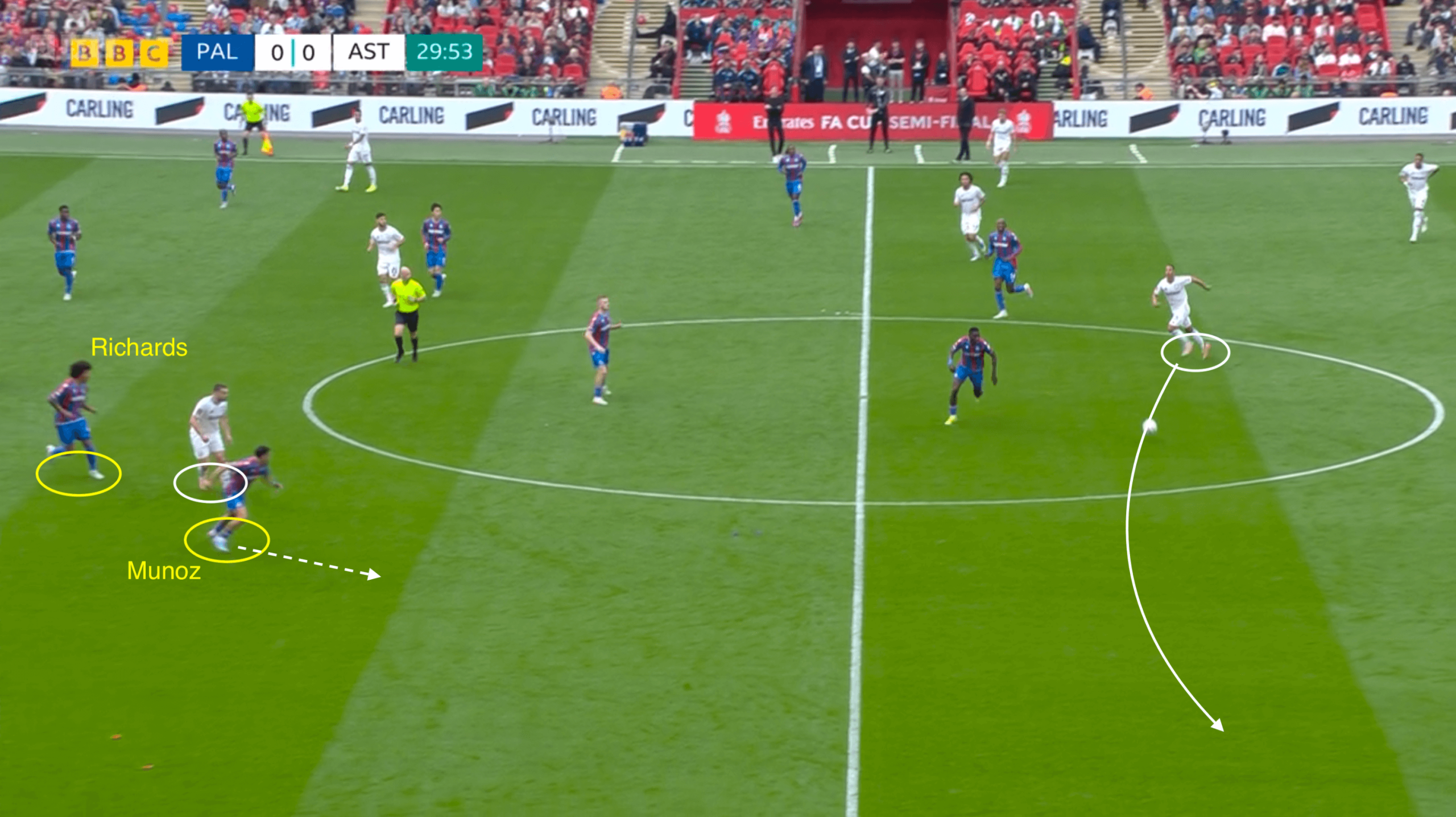
Due to the lack of passing options, Digne looks to play the ball backwards, which is the trigger for Wharton and Sarr to move up towards Tielemans and Torres.
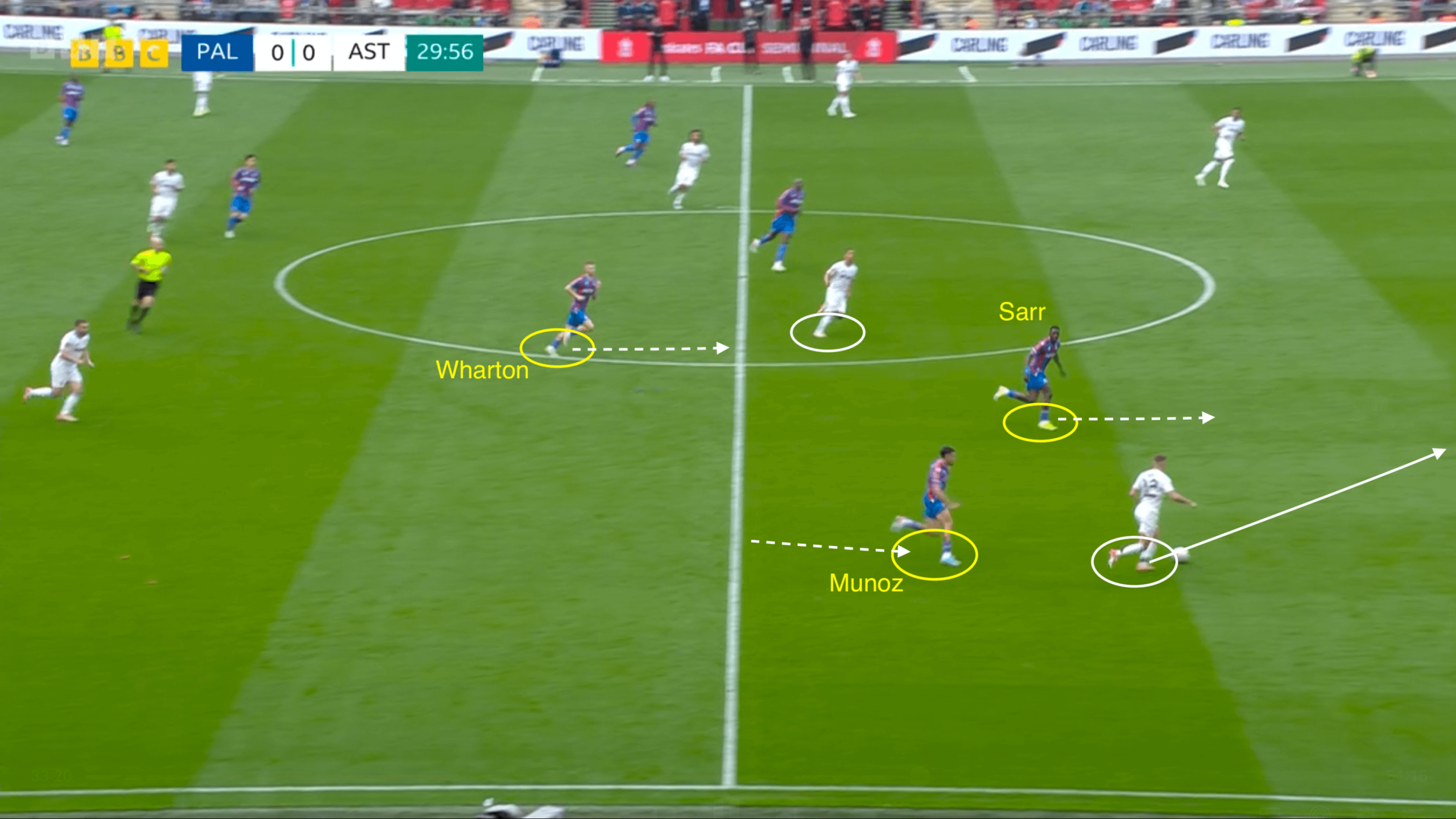
Digne then finds Torres, but Sarr blocks the centre-back’s forward pass, before setting up Eze, who scores to make it 1-0.
Palace’s opener meant that they could afford to drop deeper and strike on the transition. But their intensity in midfield led to the second goal when Wharton won the ball in the centre of the pitch, before Mateta found Sarr, who struck it into the bottom corner. Later in the game, Sarr scored another goal after Eddie Nketiah dispossessed Tielemans in midfield.
Advertisement
“All three goals we scored were when we won the ball in their half, but waiting for the right moments,” said Glasner after Palace’s 3-0 victory against Villa on Saturday. “It’s not always possible because these are their traps. They want you to step up and then they use the quick passes.”
Glasner knew that his team had to be selective in their pressing, but taking things slower took them far as Palace reached their third ever FA Cup final.
(Top photo: Glyn Kirk/AFP via Getty Images)
This news was originally published on this post .






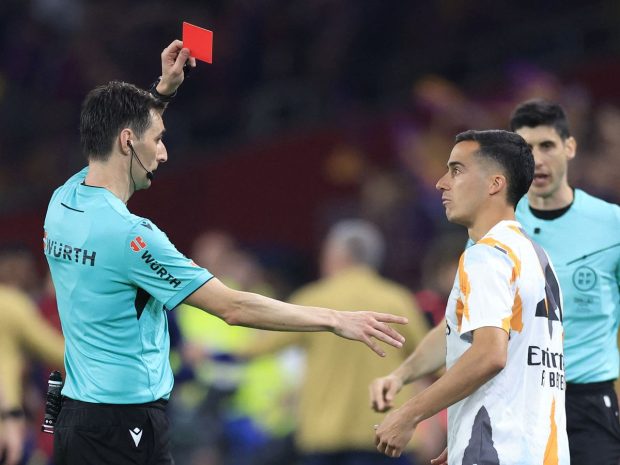

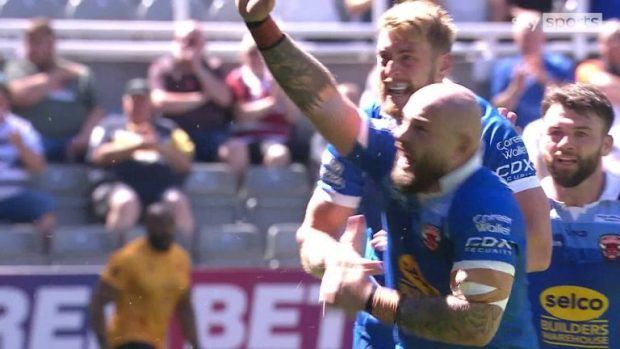
Be the first to leave a comment